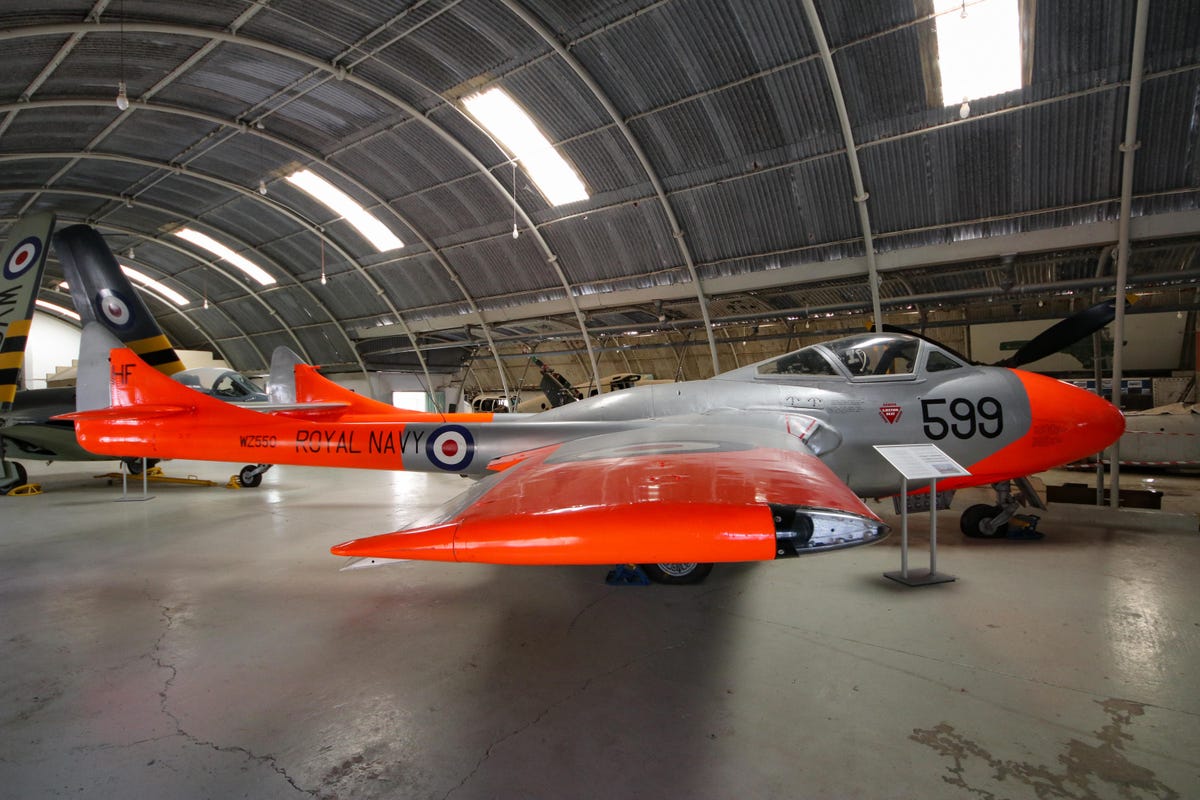
Malta Aviation Museum
Near the village of Ta' Qali, the Malta Air Museum is a bit of a hidden gem. The de Havilland Vampire you see here, for example, is immaculate.
For the full story behind this tour, check out Maltese falcons: An island museum full of beautiful aircraft.
Sea Hawk
As well restored as the Vampire, this Sea Hawk sits right behind.
Trainer
Looking something like a kids toy, this Link Trainer was pretty cutting-edge for the 1930s.
Huey
Adjacent to the Vampire and Sea Hawk are a few odds and ends, like this UH-1.
AutoGiro!
Home-built and powered by a VW Beetle engine.
C-47
First flown by the US Air Force in 1944, this C-47 dominates the small hanger, and lends an eerie aesthetic to the space.
Resting
It's awaiting restoration. One of its restored sisters is in another hangar.
Parts and rec(lamation)
Pieces of several aircraft, also awaiting restoration.
Venom
That's an entire Sea Venom.
Some assembly required
Probably not too hard to put back together, right? Sort of like Ikea furniture?
Pistons
This whole area had parts big and small, including electronics, engines pieces, even an old typewriter.
Main hangar
The main hangar houses the big aircraft.
DC-3
A civilian DC-3, in good shape despite its age.
Dakota
The museum's goal is to fully restore it to passenger airliner spec.
Agusta/Bell
The tiny Bell 47, made by Agusta in Italy. This example was the first aircraft obtained by the Armed Forces of Malta.
Texas trainer
This North American T-6G Texan served in two Italian flight schools. But that's not what's interesting...
Guts
The sides are cut away, so you can see the many cables and linkages required to operate the aircraft.
'Fix It Again Tony'
Certainly better known for their cars, Fiat, specifically Fiat Aviazione, built aircraft for 61 years before merging with another company to become Aeritalia (which itself merged with other companies to eventually become Leonardo S.p.A.). This is the G.91 fighter-bomber.
G.91
The sleek G.91 flew with the Italian, West German and Portuguese air forces until the mid-1990s.
My, what a big nose you have
The nose of an English Electric Lightning.
Just the nose
Just the nose and cockpit of the EE Lightning, though. In the foreground is a cutaway example of the Rolls Royce Avon that would have powered it. This example was used in Malta for instructional purposes.
Smaller jet
In comparison to the Avon, here's a tiny Turbomeca Arriel. It was typically used as a helicopter engine.
Bigger jet
Or, to go the other way, here's an Armstrong Siddeley Sapphire, the type of engine that powered many early British bombers and fighters. This particular one once propelled a Gloster Javelin.
Meteor
One of three Gloster Meteors at the museum (two are on display).
Restoration in progress
This one is going to be restored and painted to match the squadron of one of the museum's biggest benefactors (who was stationed on Malta when the RAF was here).
Night fighter
This Gloster Meteor is the NF.14 night fighter variant.
Aviation rhinoplasty
It's easy to tell the NF.14s because of their extra-long nose.
BAC One-Eleven
Most air museums can't fit entire large aircraft, so they show the interesting bits. This is the nose from a BAC 1-11. The museum also has an engine from the same plane.
Cockpit
What's cool is you can go inside. So many dials. A far cry from today's glass cockpits, like the one in the Cirrus Vision Jet.
Famous Huey
Though stripped out, this Huey has had a long, interesting life. It served in Vietnam, the first Gulf War, and Alabama's Air National Guard. And then it became rather famous...
Movie star
Apparently it was used in "Munich," "Tropic Thunder" and eventually, "World War Z," which was shot here in Malta, where the chopper stayed.
Air Battle of Malta Memorial Hangar
The last hangar commemorates the Air Battle of Malta with a Spitfire and a Hurricane, both with ties to Malta.
Spitfire
This MkIX Spitfire flew in the North Africa Front of WWII before being stationed on this very RAF base, taking part in Operation Husky to take Sicily.
MkIX
It was then stationed in Sicily and the Italian mainland before coming back to Malta in 1945.
Spitfire
This MkIIA Spitfire was built in 1941 and was delivered to Malta in May or June of that year.
MkIIA
It briefly flew off the carrier HMS Ark Royal. Before dawn on July 4, 1941, after what is assumed to have been an engine fire, it crashed at night. The plane, and sadly, the pilot, Sgt. Thomas Hackston, were lost at sea.
Recovery
50 years later, the plane was found by a diver. Sgt. Hackston's sisters were still alive and were glad to learn the fate of their beloved brother. The aircraft was recovered from the sea and painstakingly restored.
For the more about this lovely museum, check out Maltese falcons: An island museum full of beautiful aircraft.

